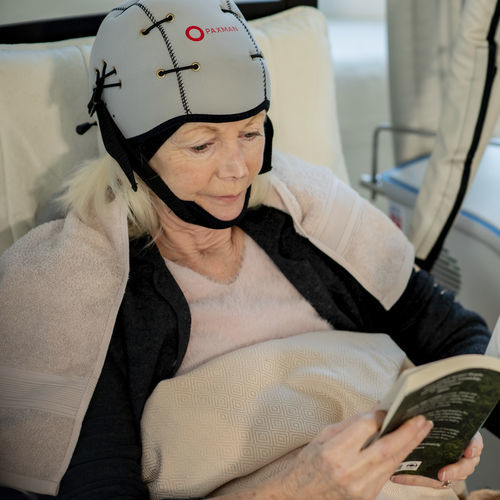
- Secondary care
- Oncology
- Paxman Scalp Cooling
Scalp cooling system PSCS

Add to favorites
Compare this product
Description
The Paxman Scalp Cooling System provides the leading scalp-cooling technology for preventing chemotherapy-induced alopecia
The system consists of a compact refrigeration unit, containing a coolant that is circulated through specially designed cooling caps.
Features:
Available in 2 models to allow either 1 patient to be treated or 2 patients to be independently treated at the same time.
Small, compact size, which is easily manoeuvred (Height 25.2”/64cm (inc. extended support arm 64.9”/165cm) x Width 12.6”/32cm x Depth 16.5”/42cm)
Easy-to-read, touch-screen visual display with system-status graphics
One-touch switch operation for simple ease of use
Scientifically developed, low-temperature, non-viscous coolant with ultra-efficient heat transfer properties
Instant cooling capability once connected to the system to allow for immediate use
Visual and audible information signals for restricted and no-flow coolant conditions
Pay-for-use tokens available in some countries
The Paxman Cooling Caps
The personal, lightweight single-patient-use cold cap is manufactured from medical-grade, soft-silicone material designed to provide a close fit around the patient’s head.
Features:
After extensive anthropometric research regarding head shapes, 6 different cap sizes were developed to best meet the needs of all patients
Coolant passes through the cap to extract heat from the patient’s scalp
Inline temperature sensors ensure the cap maintains an even and consistent temperature at the scalp
Neoprene cover insulates and protects from high room temperatures, whilst absorbing condensation
VIDEO
*Prices are pre-tax. They exclude delivery charges and customs duties and do not include additional charges for installation or activation options. Prices are indicative only and may vary by country, with changes to the cost of raw materials and exchange rates.

